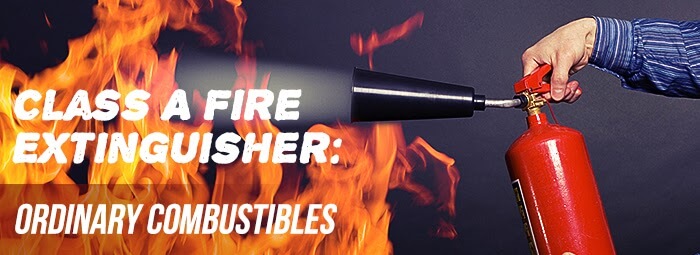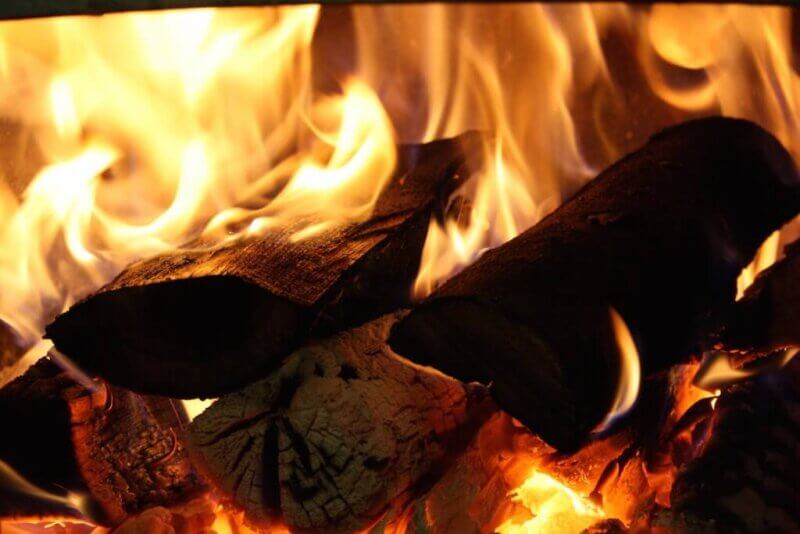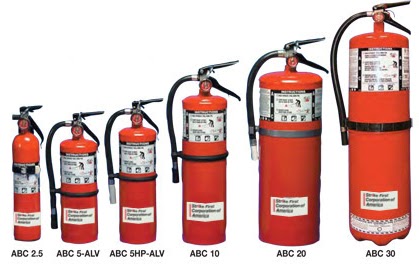
Keeping your facility equipped with properly stored and inspected fire extinguishers is not only required by law, but may also help you sleep better at night. Different facilities will require specific extinguishers based on the types of combustible materials present. Each class of materials is given a letter rating and will have one or more particular fire extinguisher containing the appropriate type of agent to extinguish the flames. Class A fires are the first class of fire that need to be addressed. Learn all the details about Class A fires and suitable Class A fire extinguishers to keep your business or home safe.

Fires are classified by which type of material is fueling the flames as well as which agents are effective at halting them. A Class A fire is burning when any of the following “ordinary combustibles” have ignited:
Flames will continue to burn provided the four following elements remain available:
An uninhibited chemical reaction which changes the solid fuel into a gaseous form
Naturally, different combustible materials will allow flames to spread at different rates. By definition, the flame spread rating is a number that is determined by standard testing methods which indicates a material’s propensity to spread flames rapidly.
The numbers displaying this rating are classified into five groups (also with a corresponding letter rating) and range from zero to greater than 500 with higher numbers indicating a more rapid spreading of flames. All combustible materials which can fuel class A fires have spread ratings between zero and 25.
Since different classes of fires require different agents to put them out, the first step in fighting any fire is to determine what material is burning. Class A fires are the most common type and can be eliminated by removing any of the four required elements listed above.
Agents which are effective at fighting Class A fires include water, chemical foam, and dry chemicals often contained in class A or multi-purpose fire extinguishers. Halotron is an additional agent effective against class A fires which leaves no residue after use, making it appropriate for sensitive environments such as areas containing technological equipment and/or devices.
Each of the agents listed above will remove a different component required for the fire to continue burning. Heat is removed from the equation when flames are doused with water, whereas chemical foaming agents cut off the fire’s oxygen supply. Dry chemicals and halotron stop the chemical reaction needed to convert fuel into a usable, gaseous form to feed the fire.

There are a number of Class A fire extinguishers designed for Class A fires. Depending upon which type of extinguishing agents they contain, they will be suitable for either Class A fires exclusively or will be considered multi-purpose, making them effective with fires in Classes A, B, and/or C.
Every extinguisher will display one or more symbols indicating the appropriate class of fires they are designed to extinguish. The most common types for Class A fires include:
Although suitable for Class A only, extinguishers containing pressurized water are highly effective at stopping flames fueled by all Class A materials and are particularly useful for deep seated fires such as those involving furnishings. An excellent choice for schools, offices, and stockrooms.
Extinguishers marked with an A, B, and C typically contain a dry chemical as well as a compressed, non-flammable gas used as a propellant. Be careful to read labels, as some multi-purpose extinguishers are only appropriate for Class B and C fires.
Because chemical foams are effective at fighting both class A and B fires, they are often found in areas where flammable liquids are present in addition to ordinary combustibles.
Known as a “clean” agent due to the lack of residue that remains after evaporation, extinguishers containing this vaporizing liquid can be used on Class A, B, and C fires. They are often preferred in computer rooms, movie theaters, and telecommunication zones.
When selecting the best Class A fire extinguishers for your facility, you must take into account all of the combustible materials present in each area. Depending on the size of your building, you may be required to have a number of extinguishers available.
Keep in mind that different types may be more suitable in specific zones. For example, a kitchen area will have different combustible materials than a warehouse. With careful evaluation of each situation, you’ll remain in full compliance with all fire codes while providing your employees and guests a safer environment.